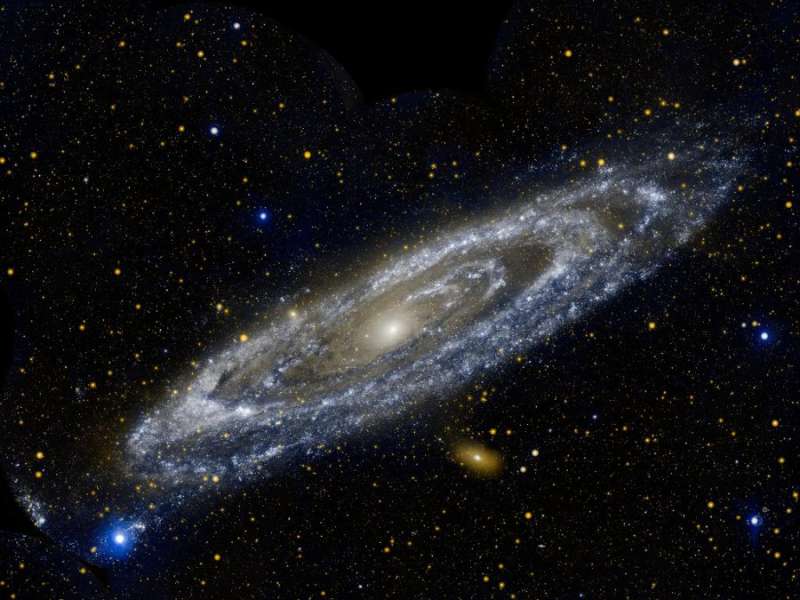
|
Credit & Copyright: GALEX, JPL-Caltech,
NASA
Explanation:
A mere 2.5 million light-years away, the Andromeda Galaxy really is
just next door as large galaxy's go.
So close, and spanning
some 260,000 light-years, it took 11 different
image fields from the
Galaxy Evolution Explorer (GALEX) satellite's
telescope to produce this gorgeous portrait of the spiral galaxy in
ultraviolet light.
While its spiral arms stand out
in visible light images of Andromeda
(also known as M31), the arms look more like rings in
the
GALEX ultraviolet view, dominated by hot, young, massive stars.
As sites of intense star formation, the rings have been interpreted has
evidence Andromeda collided with its smaller neighboring elliptical
galaxy M32 more than 200 million years ago.
The large Andromeda galaxy
and our own Milky Way are the dominant members of the
local
galaxy group.
|
January February March April May June July August September October November December |
| ||||||||||||||||||||||||||||||||||||||||||||||||
NASA Web Site Statements, Warnings, and Disclaimers
NASA Official: Jay Norris. Specific rights apply.
A service of: LHEA at NASA / GSFC
& Michigan Tech. U.
Based on Astronomy Picture
Of the Day
Publications with keywords: M 31 - Andromeda galaxy
Publications with words: M 31 - Andromeda galaxy
See also:
- APOD: 2025 December 16 Á Andromeda and Sprites over Australia
- Andromeda and Friends
- APOD: 2025 August 6 Á Meteor before Galaxy
- Hubble s Andromeda Galaxy Mosaic
- NGC 206 and the Star Clouds of Andromeda
- APOD: 2024 September 8 Á M31: The Andromeda Galaxy
- APOD: 2023 November 13 Á Andromeda over the Alps
